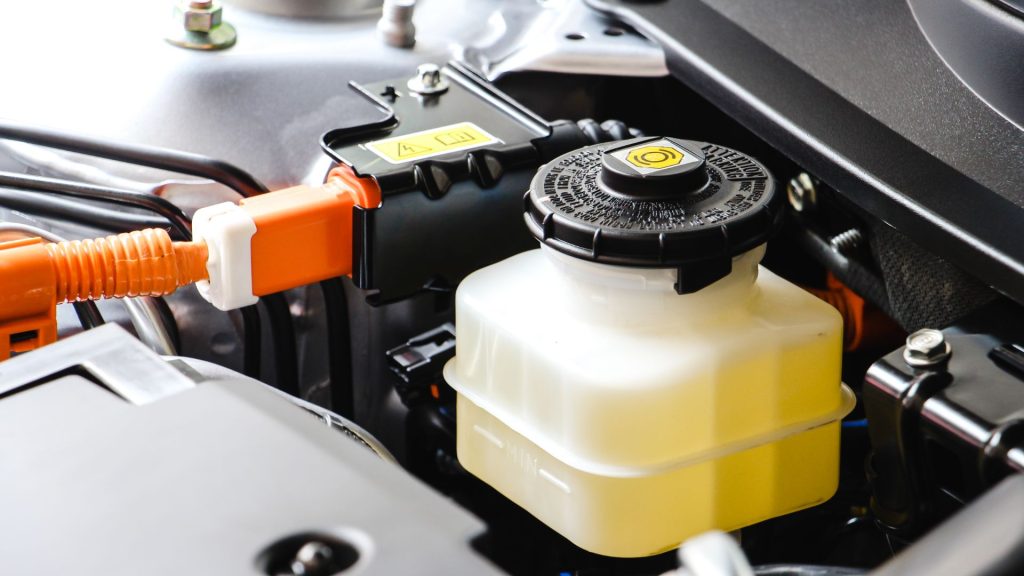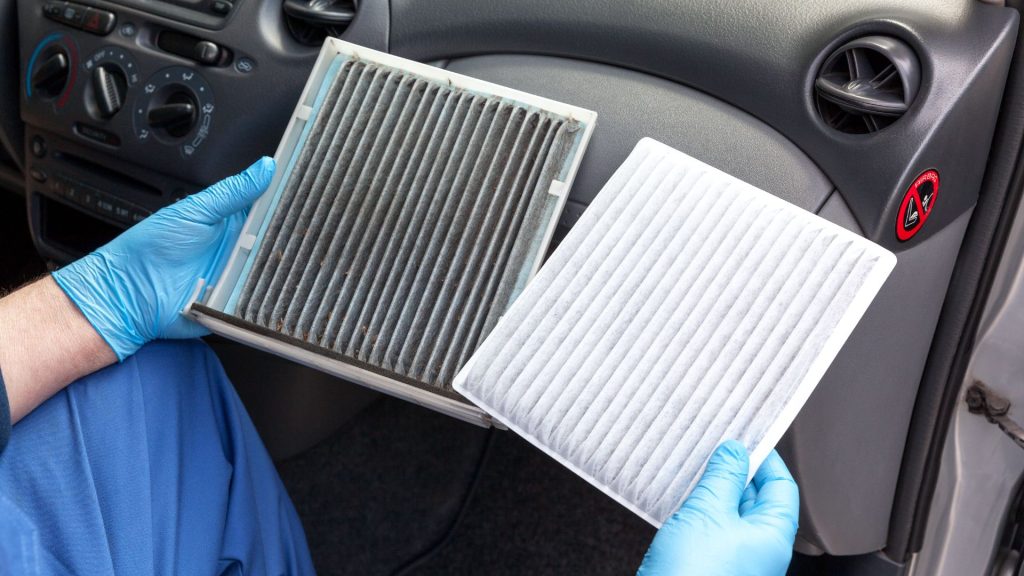Do Teslas need oil changes? — all you need to know
Learn about Teslas and their need for oil changes.

Maintaining luxury electric vehicle brands like BMW, Mercedes Benz, Porsche, and Audi can be expensive. On the other hand, electric vehicles like Tesla models have low maintenance cost compared to the mentioned brands. When it comes to Tesla maintenance, one of the most common questions asked by car owners is: do Teslas need oil changes?
Teslas do not need oil changes because they lack an internal combustion engine. These vehicles rely on grease and lubrication oil rather than engine oil for lubrication.
Grease is a good option for Tesla vehicles since they barely degrade over time, providing drivers with longer trips and less attention. In this article, we will discuss why Teslas do not need oil changes and simple maintenance steps for Tesla owners.
Do Teslas require oil changes
Teslas do not require oil changes because they get powered by electric motors and do not use gas-powered engines. Regular oil changes aren’t necessary for Tesla models, but they have a list of recommended maintenance drivers should perform to keep the electric vehicle running at its best.
The equipment that powers and propels the Tesla is based on an electric motor. This motor uses electricity to generate power. With an electric vehicle, an electric charge is all that is needed to keep the car running. If the vehicle isn’t charged, it will not start.
This contrasts with gas-powered vehicles that burn fuel to start the engine. Gas-powered vehicles require oil because the fluid helps lubricate, clean and cool the engine’s moving parts. In a standard combustion engine, you will find bearings, pistons, cylinder walls, and timing gears that need lubrication.
The lubrication properties of the oil help reduce friction and provide a cooling effect to all components. Teslas use a small amount of grease to ensure the smooth operation of the motor. This is due to few moving parts and extreme movement within the engine.
Unlike regular engines, there is no need to change grease since it does not break down. Tesla requires the use of certain oils and lubricants for their components. For example, the drive unit within the AC induction motor needs oil. However, the oil does not regularly need to be changed until the vehicle has been driven for 100,000 miles.
Furthermore, the gearbox in the Tesla also requires a specific type of oil. Tesla recommends replacing the oil within the first, fifth, and ninth years of ownership. If you do not carry out the oil change, the gearbox might start to fail, causing problems with driving.
Which Tesla components need oil?
Tesla cars do not require oil changes, unlike other vehicles but the model Y teardown moves and spins components in the car that require lubrication. This is why you may find an oil filter setting near your battery for all-electric models instead of under regular motors, as in fuel-powered vehicles.
The oil filter for the Tesla Model 3 keeps the grease from circulating and clogging up any moving components, so you can quickly inspect the dipstick. The oil filter gets hold of escaping grease, preventing it from clogging the motor and gearbox. You can also use a dipstick to check the oil levels in Tesla Model 3.
The gearbox is a vital component of any transmission system. It is essential in ensuring hassle-free transmissions and protecting against damage to other drive components. Inside Tesla’s advanced electric drive unit, Pentosin ATF 9, a synthetic oil, ensures superior gearbox performance.
Unlike regular engine oil, which can degrade or become contaminated by fumes over time, the Pentosin ATF 9 doesn’t need to get changed due to its optimal resistance to breaking down and its ability to protect against wear. The Pentosin ATF 9 plays an essential role in maintaining the efficient operation of Tesla over an extended period.
What fluids do Tesla cars need?

While Tesla vehicles do not require oil changes, they require certain fluids to ensure the vehicle parts function optimally. Some fluids needed by Tesla cars include:
Transmission fluid
The transmission fluid is vital in Tesla vehicles. Tesla uses a different type of transmission and gearbox fluid to keep the operation of their cars running smoothly. You should replace the transmission fluid every 12,500 miles, and it is crucial to use the correct fluid type.
Brake fluid
The braking system of Tesla is different compared to standard vehicles, but it still has brake fluid. Due to the regenerative braking system, the brake fluid does not wear out fast enough. For this reason, Tesla usually recommends checking the brake fluid’s quality every one or two years to ensure all is in the proper condition. Contaminated brake fluid will reduce efficiency and can create a harmful scenario in traffic.
Grease
Tesla uses grease in several components to prolong the lifespan of specific parts. You can find grease on the latches, handles, hinges, and drive axles. Grease makes these parts remain lubricated and efficient.
Windshield washer fluid
Just like regular internal combustion cars, Teslas need windshield washer fluid. Tesla vehicles have auto glass that needs adequate cleaning for maximum visibility. Adding windshield wiper fluid is an easy process for Tesla models. You have to open the hood and access the maintenance panel, and then check for the reservoir that needs filling.
Coolant
The coolant used in Teslas varies, and it is needed for different reasons. Tesla cars use G48 coolant. This coolant keeps the battery cells from overheating. The G48 is a blue-green-colored ethylene glycol-based fluid. It regulates the temperature in the battery cells and also prevents corrosion. It is best to use organic corrosion inhibitors that specifically list Tesla as a verified make
Maintenance tips Teslas need instead of an oil change

Regardless of vehicle type, you should regularly perform maintenance tasks to keep your car in good shape. Teslas may not require oil changes, but there are some regular maintenance tasks that you have to commit to keeping your vehicle running smoothly. Some of the most crucial maintenance services recommended by Tesla include the following;
Cabin air filter
The cabin air filter mechanism aids in the prevention of industrial fallout, pollen, dust, and other particles from entering the car through the vents. Now that you had the cabin air filter explained for Tesla cars, it’s essential to see how often it should be replaced. Tesla recommends that the cabin air filters get replaced every 2 or 3 years, depending on the model. Some Tesla models are equipped with HEPA filter that has to get replaced every three years.
If you need to replace your cabin air filter or HEPA filter, it is essential to follow this maintenance schedule carefully to ensure optimal air quality inside the cabin and keep your car running smoothly. Tesla’s advanced air filtration system and regular maintenance routine will keep you safe and comfortable.
Brake fluid check
The brake fluid is one of the most vital components in the vehicle’s braking system. Brake fluid can become contaminated with dirt, water, and debris over an extended period. This contamination can cause several problems, including reduced braking performance and increased wear on brake components.
Due to this reason, Tesla recommends inspecting your brake fluid for impurities every two years and refilling as required. You can easily replace brake fluid at home with the correct tools and supplies. If it has been more than two years since you got to check your brake fluid, ensure that you inspect it to know if your brakes are operating at their peak performance.
Tire rotation and wheel alignment
Tesla recommends rotating your tires every 6,250 miles or when the tread depth difference is 2/32 inches more, whichever comes first. This helps to preserve traction and steering performance which are two critical factors of vehicle handling. Tesla warns drivers against harsh steering input and performing high-speed driving as both operations can cause wear and require more frequent maintenance.
Out-of-balance and misaligned wheels can relatively impact steering components and tire longevity. If you want to keep your vehicle performing for an extended period, ensure that you follow Tesla’s recommendations.
Air conditioning service
Tesla models require regular air conditioning service to promote longevity. The AC desiccant bag needs replacement at regular intervals. The desiccant bag of the Tesla Model 3 needs replacement every six years, the Model Y needs replacement every four years, while the Model S and X need replacement every three years.
Our take
Teslas do not need oil changes. However, the gearbox of Tesla requires synthetic oil known as Pentosin ATF 9 to facilitate smooth transmission. Unlike regular motor oil, Tesla’s synthetic oil doesn’t break down over time and hence doesn’t need replacement. For exact maintenance tips and requirements, we recommend checking out the owner manual for more in-depth information.
How often do Teslas need to be serviced?
To keep your Tesla running at optimal performance, the company recommends bringing your car in for servicing every year, or 12,500 miles for the Model S and X, and every two years, or 2,500 miles for the Model 3.
How much is an oil change on a Tesla?
The average cost for a Tesla oil change is $135.
Does Tesla require a lot of maintenance?
Tesla requires very little maintenance compared to standard vehicles. This is due to their design, which features fewer moving components than regular vehicles.
What kind of oil does a Tesla use?
The Tesla drive unit uses a synthetic oil called Pentosin ATF 9.